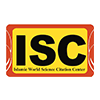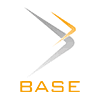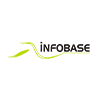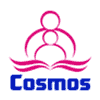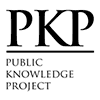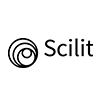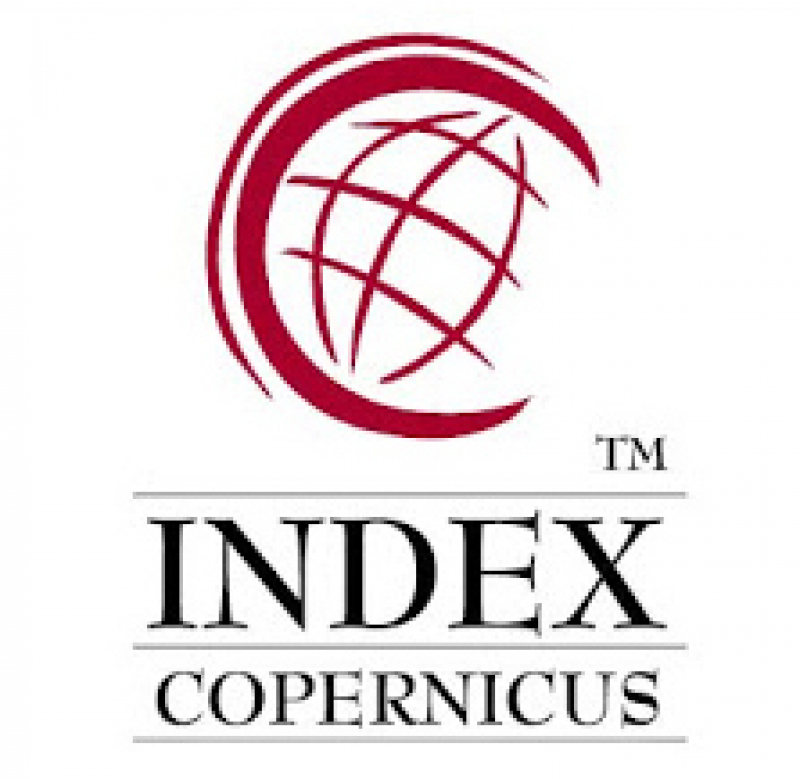The Role of Intellectual Agility and Marketing Agility on Marketing Performance: A Study on Small and Medium Industries (SMEs)
Abstract
Objectives – This study aims to analyze the influence of Intellectual Agility and Marketing Agility on Marketing Performance in the context of Batik Small and Medium Industries (SMEs). In addition, this study also evaluates the interaction between the two variables in increasing the competitiveness of batik businesses. Methods – A quantitative approach is used with the Partial Least Squares-Structural Equation Modeling (PLS-SEM) method. Data was collected from Batik SMEs and analyzed using bootstrapping techniques to test the relationship between variables. Results – The results of the study showed that Intellectual Agility had a significant effect on Marketing Performance, with a coefficient of 0.680 and a P-Value of 0.000. In contrast, Marketing Agility did not have a significant influence on Marketing Performance (P-Value 0.054). In addition, the interaction between Marketing Agility and Intellectual Agility did not have a significant impact on Marketing Performance (P-Value 0.697). Implications – These findings indicate that increasing Intellectual Agility is the main factor in increasing the competitiveness and marketing performance of Batik SMEs. Therefore, batik business actors need to increase creativity, innovation, and the use of technology in their marketing strategies. Moreover, even though Marketing Agility has not proven to have a significant impact, digital transformation is still necessary to deal with market changes. Contribution – This research provides new insights into the importance of intellectual capacity in supporting the marketing strategy of Batik SMEs. Strategic recommendations are also given for industry players to increase competitiveness through innovation and the use of digital technology.
Keywords
Full Text:
PDFReferences
Abdillah, A., Widianingsih, I., Buchari, R. A., & Nurasa, H. (2024). The knowledge-creating company: How Japanese companies create the dynamics of innovation The knowledge-creating company: How Japanese companies create the dynamics of innovation , by Nonaka, Ikujiro & Takeuchi, Hirotaka, New York, Oxford University Press, 1995, 284 pp., $19.39 (Hardcover) & $7.40 (paperback), ISBN: 0199879923, 9780199879922. . Learning: Research and Practice, 10(1), 121–123. https://doi.org/10.1080/23735082.2023.2272611
Ambler, T., Kokkinaki, F., & Puntoni, S. (2004). Assessing Marketing Performance: Reasons for Metrics Selection. Journal of Marketing Management, 20(3–4), 475–498. https://doi.org/10.1362/026725704323080506
Calantone, R. J., Cavusgil, S. T., & Zhao, Y. (2002). Learning orientation, firm innovation capability, and firm performance. Industrial Marketing Management, 31(6), 515–524. https://doi.org/10.1016/S0019-8501(01)00203-6
Chen, Y., Wang, Y., Nevo, S., Benitez-Amado, J., & Kou, G. (2015). IT capabilities and product innovation performance: The roles of corporate entrepreneurship and competitive intensity. Information and Management, 52(6), 643–657. https://doi.org/10.1016/j.im.2015.05.003
Chen, Y., Wang, Y., Nevo, S., Jin, J., Wang, L., & Chow, W. S. (2014). IT capability and organizational performance: The roles of business process agility and environmental factors. European Journal of Information Systems, 23(3), 326–342. https://doi.org/10.1057/ejis.2013.4
Coviello, N. E., & Joseph, R. M. (2012). Creating major innovations with customers: Insights from small and young technology firms. Journal of Marketing, 76(6), 87–104. https://doi.org/10.1509/jm.10.0418
Edmondson, A. C. (2012). Teaming: How Organizations Learn, Innovate and Compete in the Knowledge Economy.
Gilmore, A., Carson, D., & Grant, K. (2001). SME marketing in practice. Marketing Intelligence & Planning, 19(1), 6–11. https://doi.org/10.1108/02634500110363583
Gligor, D. M., Esmark, C. L., & Holcomb, M. C. (2015). Performance outcomes of supply chain agility: When should you be agile? Journal of Operations Management, 33–34, 71–82. https://doi.org/10.1016/j.jom.2014.10.008
Grant, R. M. (1996). Toward a knowledge-based theory of the firm. Strategic Management Journal, 17(SUPPL. WINTER), 109–122. https://doi.org/10.1002/smj.4250171110
Hult, G. T. M., Hurley, R. F., & Knight, G. A. (2004). Innovativeness: Its antecedents and impact on business performance. Industrial Marketing Management, 33(5), 429–438. https://doi.org/10.1016/j.indmarman.2003.08.015
Irawan, A. (2020). Challenges and Opportunities for Small and Medium Enterprises in Eastern Indonesia in Facing the COVID-19 Pandemic and the New Normal Era. TIJAB (The International Journal of Applied Business), 4(2), 79. https://doi.org/10.20473/tijab.v4.i2.2020.79-89
Jayawarna, D., Jones, O., & Macpherson, A. (2014). Entrepreneurial potential: The role of human and cultural capitals. International Small Business Journal: Researching Entrepreneurship, 32(8), 918–943. https://doi.org/10.1177/0266242614525795
Kalaignanam, K., Tuli, K. R., Kushwaha, T., Lee, L., & Gal, D. (2021). Marketing Agility: The Concept, Antecedents, and a Research Agenda. Journal of Marketing, 85(1), 35–58. https://doi.org/10.1177/0022242920952760
Lu, Y. (2017). Qjarterjy. 35(4), 931–954.
Morgan, N. A. (2012). Marketing and business performance. Journal of the Academy of Marketing Science, 40(1), 102–119. https://doi.org/10.1007/s11747-011-0279-9
Morgan, N. A., Clark, B. H., & Gooner, R. (2002). Marketing productivity, marketing audits, and systems for marketing performance assessment: Integrating multiple perspectives. Journal of Business Research, 55(5), 363–375. https://doi.org/10.1016/S0148-2963(00)00162-4
Narver, J. C., & Slater, S. F. (2012). The Effect of Market Orientation on Business Profitability. Developing a Market Orientation, 54(4), 45–78. https://doi.org/10.4135/9781452231426.n3
O’Cass, A., & Sok, P. (2014). The role of intellectual resources, product innovation capability, reputational resources and marketing capability combinations in firm growth. International Small Business Journal: Researching Entrepreneurship, 32(8), 996–1018. https://doi.org/10.1177/0266242613480225
Overby, E., Bharadwaj, A., & Sambamurthy, V. (2006). Enterprise agility and the enabling role of information technology. European Journal of Information Systems, 15(2), 120–131. https://doi.org/10.1057/palgrave.ejis.3000600
Palmatier, R. W., Dant, R. P., Grewal, D., & Evans, K. R. (2006). Factors influencing the effectiveness of relationship marketing: A meta-analysis. Journal of Marketing, 70(4), 136–153. https://doi.org/10.1509/jmkg.70.4.136
Powell, W. W., Koput, K. W., & Smith-Doerr, L. (1996). Interorganizational collaboration and the locus of innovation: Networks of learning in biotechnology. Administrative Science Quarterly, 41(1), 116–145. https://doi.org/10.2307/2393988
Rahayu, R., & Day, J. (2015). Determinant Factors of E-commerce Adoption by SMEs in Developing Country: Evidence from Indonesia. Procedia - Social and Behavioral Sciences, 195(March), 142–150. https://doi.org/10.1016/j.sbspro.2015.06.423
Sambamurthy, V., Bharadwaj, A., & Grover, V. (2003). Shaping agility through digital options: Reconceptualizing the role of information technology in contemporary firms. MIS Quarterly: Management Information Systems, 27(2), 237–264. https://doi.org/10.2307/30036530
Sukardi, M., ZA, S. Z., & Hudayah, S. (2021). The Effect of Marketing Agility to Marketing Performance through Innovation Capability of Retail Company of Spare Parts for Heavy Equipment Coal Mining in East …. Budapest International Research and Critics Institute-Journal (BIRCI-Journal)…, September, 13247–13254. https://bircu-journal.com/index.php/birci/article/view/3396
Suwandana, I. G. M. (2023). Role of Competitive Advantage in Mediating the Effect of Market Orientation on Marketing Performance of Small Medium Enterprise (SME): Study on the Gold and Silver Jewelry Craft Industry in Singapadu Village, Gianyar, Indonesia. European Journal of Business and Management Research, 8(1), 247–251. https://doi.org/10.24018/ejbmr.2023.8.1.1807
Tallon, P. P., & Pinsonneault, A. (2011). Competing perspectives on the link between strategic information technology alignment and organizational agility: Insights from a mediation model. MIS Quarterly: Management Information Systems, 35(2), 463–486. https://doi.org/10.2307/23044052
Teece, D. J., Pisano, G., & Shuen, A. (2009). Dynamic capabilities and strategic management. Knowledge and Strategy, 18(April 1991), 77–116. https://doi.org/10.4337/9781035334995.00014
Teece, D., Peteraf, M., & Leih, S. (2016). Dynamic Capabilities and Organizational Agility. California Management Review, 58(4), 13–35.
Tiago, M. T. P. M. B., & Veríssimo, J. M. C. (2014). Digital marketing and social media: Why bother? Business Horizons, 57(6), 703–708. https://doi.org/10.1016/j.bushor.2014.07.002
Tidd, Pavitt, B. (2018). Integrating Technological Market. May, 75–87.
Trainor, K. J., Andzulis, J., Rapp, A., & Agnihotri, R. (2014). Social media technology usage and customer relationship performance: A capabilities-based examination of social CRM. Journal of Business Research, 67(6), 1201–1208. https://doi.org/10.1016/j.jbusres.2013.05.002
Weerawardena, J., Mort, G. S., Salunke, S., Knight, G., & Liesch, P. W. (2015). The role of the market sub-system and the socio-technical sub-system in innovation and firm performance: a dynamic capabilities approach. Journal of the Academy of Marketing Science, 43(2), 221–239. https://doi.org/10.1007/s11747-014-0382-9
Zhou, J., Mavondo, F. T., & Saunders, S. G. (2019). The relationship between marketing agility and financial performance under different levels of market turbulence. Industrial Marketing Management, 83(August), 31–41. https://doi.org/10.1016/j.indmarman.2018.11.008
DOI: http://dx.doi.org/10.18415/ijmmu.v12i4.6691
Refbacks
- There are currently no refbacks.
Copyright (c) 2025 International Journal of Multicultural and Multireligious Understanding

This work is licensed under a Creative Commons Attribution-NonCommercial-NoDerivatives 4.0 International License.
https://ijmmu.com
editor@ijmmu.com
facebook.com/ijmmu
Copyright © 2014-2018 IJMMU. All rights reserved.







